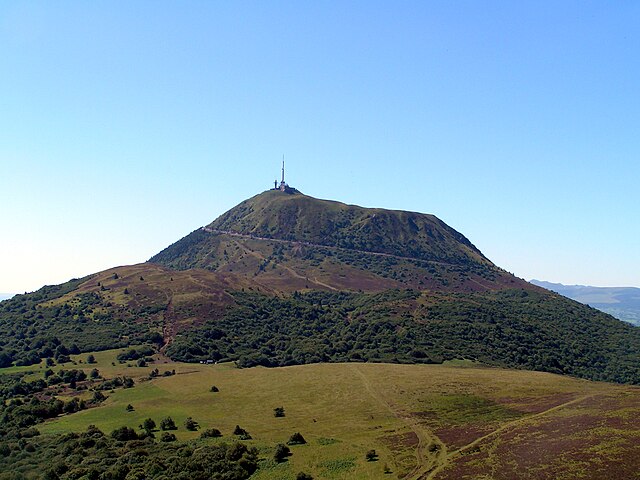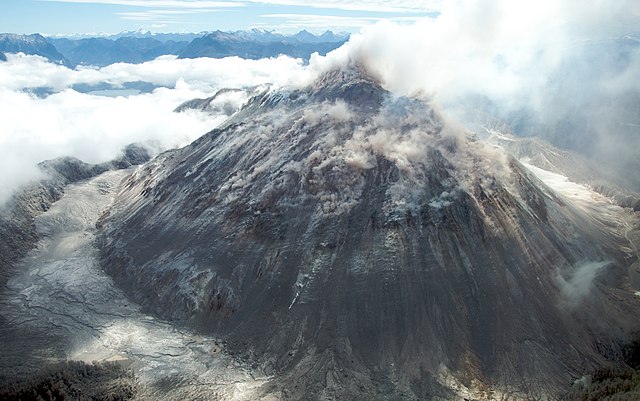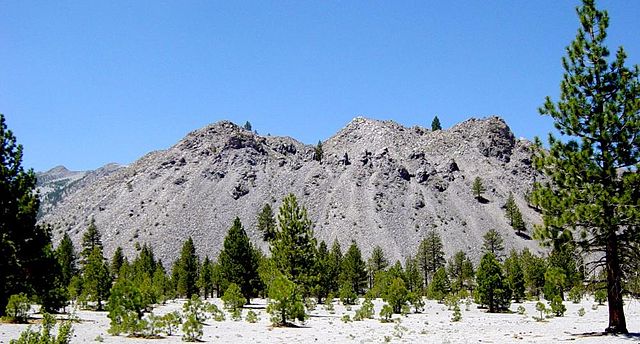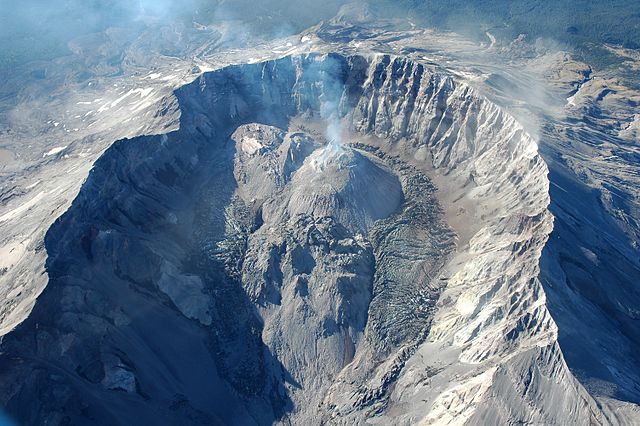Puy de Dôme is a lava dome and one of the youngest volcanoes in the Chaîne des Puys region of Massif Central in central France. This chain of volcanoes including numerous cinder cones, lava domes and maars is far from the edge of any tectonic plate. Puy de Dôme was created by a Peléan eruption, some 10,700 years ago. Puy de Dôme is approximately 10 km from Clermont-Ferrand. The Puy-de-Dôme département is named after the volcano.
General view
Puy de Dôme
The Temple of Mercury before its reconstruction
Tourist centre
In volcanology, a lava dome is a circular, mound-shaped protrusion resulting from the slow extrusion of viscous lava from a volcano. Dome-building eruptions are common, particularly in convergent plate boundary settings. Around 6% of eruptions on Earth form lava domes. The geochemistry of lava domes can vary from basalt to rhyolite although the majority are of intermediate composition The characteristic dome shape is attributed to high viscosity that prevents the lava from flowing very far. This high viscosity can be obtained in two ways: by high levels of silica in the magma, or by degassing of fluid magma. Since viscous basaltic and andesitic domes weather fast and easily break apart by further input of fluid lava, most of the preserved domes have high silica content and consist of rhyolite or dacite.
Rhyolitic lava dome of Chaitén Volcano during its 2008–2010 eruption
One of the Inyo Craters, an example of a rhyolite dome
Nea Kameni seen from Thera, Santorini
Lava domes in the crater of Mount St. Helens








